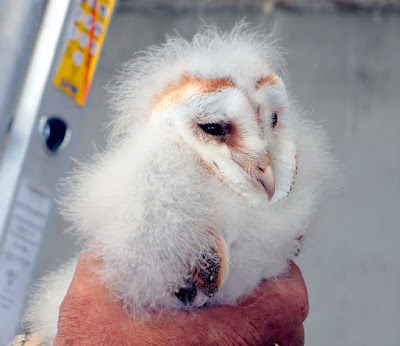On Tuesday I met Andy at 0600 for our first ringing session at Oakenclough since early spring, an unproductive period for ringing when the weather was predominately cool and wet. We don’t normally head up to the hills until a little later when real autumn migration begins rather than the summer time of post-breeding dispersal. The post-breeding species list can be rather short here at 800 metres above sea-level but increases substantially when finches and thrushes from further north begin to appear.
But with recent good weather and signs of a productive breeding season we decided to give it a go. This proved a good decision as the morning became very interesting with a catch of 40 new birds. We had zero recaptures from previous visits.
When we arrived all seemed quiet with little no bird song or even contact calls but as both the sun rose and the temperature gauge climbed we began to catch with a morning dominated by warblers.
We finished soon after 1100 with a catch of 40 birds of 12 species: 11 Blackcap, 9 Willow Warbler, 2 Garden Warbler, 1 Chiffchaff, 1 Goldcrest, 5 Chaffinch, 2 Robin, 2 Blue Tit, 2 Great Tit, 1 Treecreeper, 3 Wren and 1 Tawny Owl.
Willow Warbler
Blackcap
Robin
Goldcrest
The biggest surprise of the morning came with a Tawny Owl languishing in the bottom panel of the mist net at 10 0’clock, a time when all Tawny Owls should be tucked away and fast asleep.
Upon examination and measuring we ascertained that the owl was a juvenile born this year. A wing length of 265mm and a weight of 335 grams determined a male; a female is bigger than the corresponding male.
Tawny Owl
Tawny Owl
We no longer catch many Garden Warblers so it was good to catch two. There was one adult male Garden Warbler and a juvenile, which is far from proof of breeding on site, but possibly so.
Garden Warbler
Garden Warbler
Garden Warblers bred here at Okenclough on an annual basis until the late 1990s when invasive rhododendron overran the landscape of bramble, bracken, bilberry and hawthorn. Slowly but relentlessly the site became unsuitable for a number of species like Bullfinch, Yellowhammer, Tree Pipit and Garden Warbler, and they were pushed out by the all-conquering intruder. The rhododendron beat us too and we were forced to abandon the site in 1997.
Then in 2012/13 the land owners North West Water began a programme of rhododendron clearance and replanting of native species whereby, and after an absence of many years, we returned to the site in 2014.
Since then we have captured almost 3900 birds including two Garden Warblers in 2018 and now two more in 2019. It would be nice to think that Garden Warblers have returned for good as the site is now suitable for them. Time will tell.
Linking today to Anni's Blog and Eileen's Saturday Blog.
Linking today to Anni's Blog and Eileen's Saturday Blog.























































.JPG)











.jpg)














